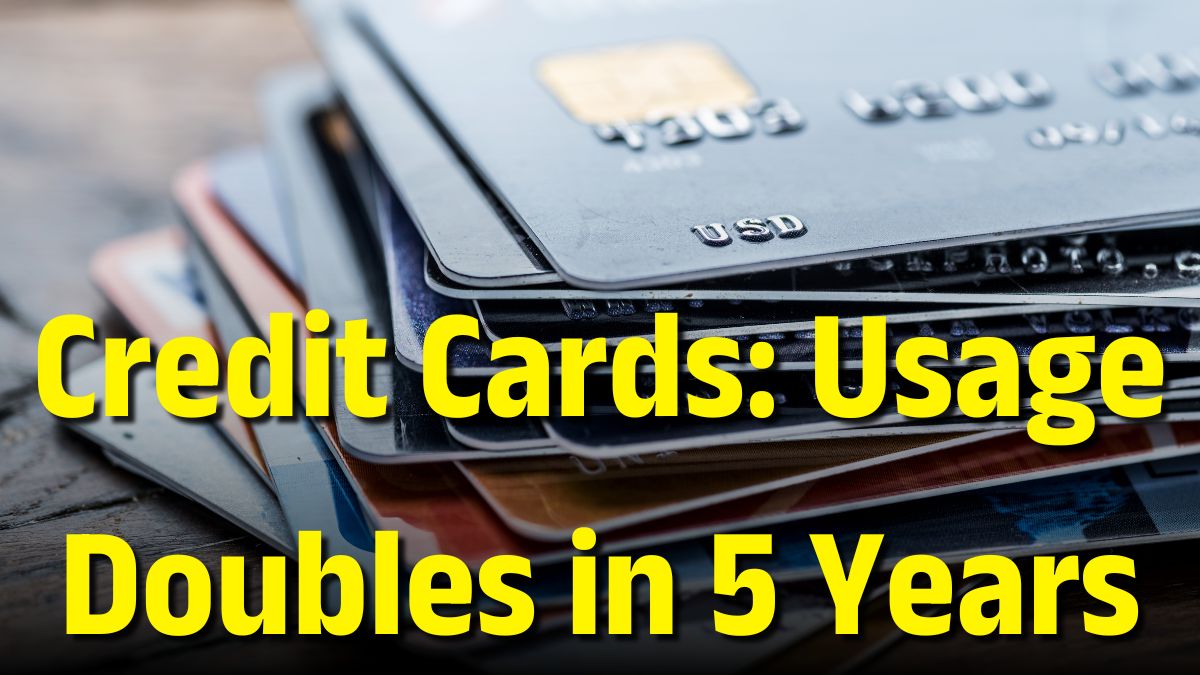Over the last ten years, India has witnessed a seismic shift in digital payments, and credit cards have presented themselves as a consumer favourite among other payment methods. As per the latest report of Reserve Bank of India (RBI), the number of credit card users has more than doubled in the last five years.
As of December 2024, 10.8 credit cards were in circulation, up from 5.53 crore in December 2019. This increase is a sign of increasing preference in Indians towards credit cards; with ease of use, rewards and convenience of digital transactions being the underlying reasons.
In contrast, debit card usage has continued to sputter over the same time frame. Debit cards may have previously been considered the preferred method of payment, however, the increase in usage of debit cards has recently levelled out, which suggests that consumers are moving away from debit cards and towards credit cards and alternative payment methods.
A Decade of Explosive Growth With Digital Payments
The RBI report also draws interesting insights on the growth of digital payments in India. In 2013, the year, there were just 222 crore digital transactions with a value of ₹772 lakh crore. Now, in 2024, those figures have soared to 20,787 crore transactions worth ₹2,758 lakh crore. This relative change in transaction volume (94 times) and transaction value (1.6 times) occurred over much of the past 10 years.
Volume growth of the digital payment segment has reached an average of 45.9% y-o-y, while transaction values have averaged an annual increase of 10.2%. This marked an exponential increase, reflecting India’s rapid penetration of technology and digital payment services, driven by technology upgrades, government efforts, and changes in consumer behaviour.
UPI: Cross-Border Payments Revolution
The Unified Payments Interface (UPI) has revolutionized the digital payment landscape in India. The RBI is now working at expanding the reach of UPI across the global by interlinking with the fast payment system of other countries. An example of this would be the integration of India’s UPI with Singapore’s PayNow in February 2023, allowing transactions on both platforms to flow seamlessly in cross-border transactions.
This progress is intended to solve problems like expensive fees, slow processing speeds, low accessibility, and little transparency in cross-border remittances. The RBI is establishing the groundwork for a tighter and more streamlined worldwide payment system by facilitating these kinds of partnerships.
From Cash to Cashless: India’s Journey
The surge in credit card usage, UPI transactions and other digital payment methods are propelling India towards a cashless economy. As a result of cash-based transactions, consumers realize the need to switch their payment modes due to the accessibility and user-friendliness of digital alternatives.
These initiatives, along with increasing inclination towards credit cards and UPI by RBI, have caused a shift in India in terms of payment systems. With each passing day, India makes further progress towards this cashless future, and whether this to be realized remains up for debate.
This RBI report also draws attention to the impact of digital payments and credit on India as a whole. India is firmly on track to become a global powerhouse in digital finance with UPI taking the lead and credit card adoption continuing to grow.


